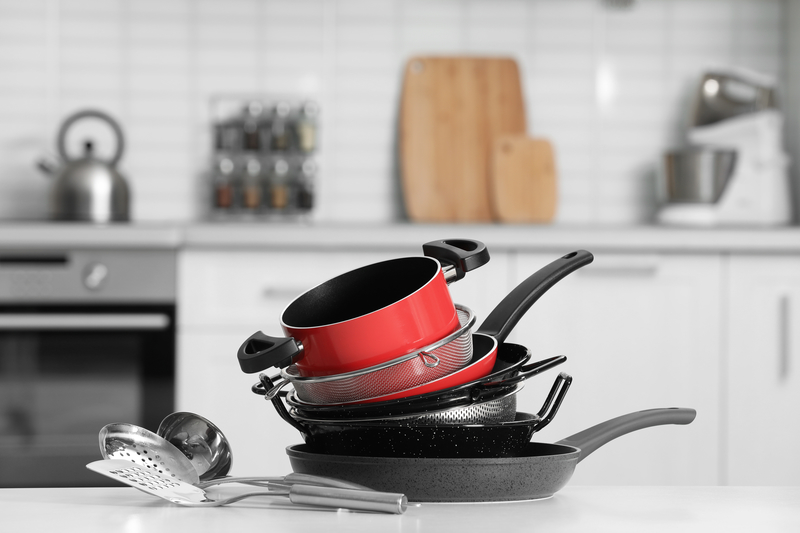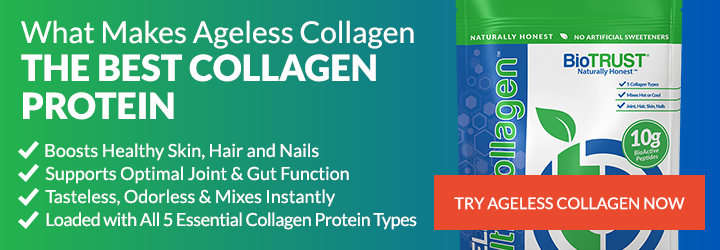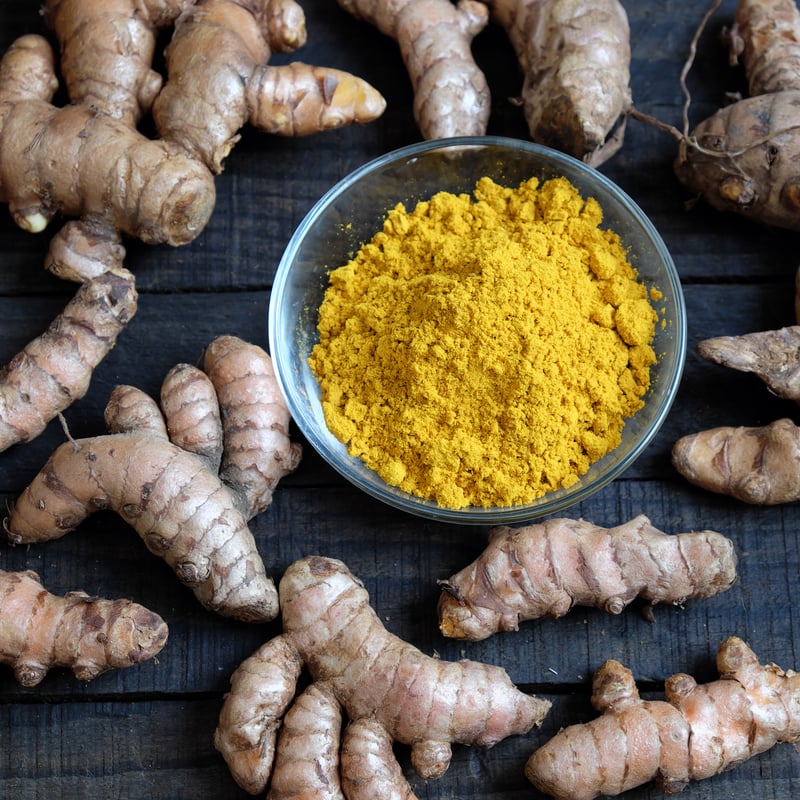3 Things in Every Kitchen that Are Ruining Your Health

If you cook regularly at home (or you’re actively striving to cook at home more), congratulations! You’re making a great decision for the health of you and your family. Research indicates that folks who cook and eat home-cooked meals tend to be not just healthier but happier.
Not surprisingly, home cookers (and eaters) are more likely to consume fewer calories, less sugar, and less processed foods and more likely to consume a healthier diet with more vegetables and fruits. They’re also likely to get more protein, calcium, iron, folate, fiber, and vitamins A, C, E, and B6. 1 And those who eat at home five or more days a week may even live longer. 2
And if you’re eating with family (around the table, not the TV), it’s even better. Kids and teens who eat at home with the family are less likely to be overweight or aggressive, and they’re also less likely to use alcohol, drugs, and cigarettes. Plus, they tend to do better in school. 3, 4, 5
So, go ahead and pat yourself on the back if you’ve been cooking at home—with bonus points if it’s a family affair.
That said, unbeknownst to many of us, there may be some common products in your kitchen that could be taking away some of those benefits—or even, dare I say, ruining your health. Fortunately, you don’t really need them, and after you learn why you’d be better off avoiding them, we’ll get into what to use instead.
Why Is There An Increased Toxic Burden
With pollution, ubiquitous chemicals from manufacturing to yardwork to skincare, and a wealth of other contaminants, we are exposed to a growing number of potentially toxic compounds (also called toxicants). Yes, our bodies were designed to naturally detox. But with the unprecedented increasing toxic load from the environment, it can be argued that it’s more difficult for our bodies to clear all of these toxicants.
Recent research indicates that this increased toxic burden could be contributing to a number of chronic, degenerative diseases. For example, chronic environmental stress has been linked to heart disease, 6 infertility, difficulty getting pregnant, impaired neurodevelopment, 7 endocrine disorders like polycystic ovary system (POS), 8 and mental health disorders. 9 This environmental stress has also been linked to mitochondrial dysfunction as well as metabolic syndrome (such as insulin resistance, Type 2 diabetes, and obesity). 10
Fortunately, research also suggests we can support the body’s ability to detox by eating more vegetables, especially cruciferous vegetables (like broccoli and cauliflower), allium vegetables (like garlic and onions), dietary fiber, and antioxidants. 11
Yet it’s also a good idea to decrease the toxic load in the first place, and one of the best places to start is in the kitchen.
3 Toxic Things Hiding in Every Kitchen
1. Time to Retire Nonstick Cookware
It’s difficult to imagine life before nonstick cookware, such as Teflon®. It makes cooking and cleanup so much faster and easier. Unfortunately, once heated—especially higher heats like 370°F degrees and above—nonstick cookware has been found to leach potentially dangerous chemicals into foods, including perfluorooctanoic acid (PFOA), perfluorooctane sulfonic acid (PFOS), and polytetrafluorethylene (PTFE). In fact, because these chemicals are so ubiquitous, they’ve been found in over 98% of the U.S. population. 12
The issue is that research has linked these types of chemicals to a number of health issues, including increased risk for diabetes, cardiovascular disease, cancer, thyroid disease, and inflammation. They’ve also been associated with endocrine disruption 13 and elevated uric acid, which can contribute to issues like gout and kidney stones. 12
Fortunately, as of 2015, many nonstick pan manufacturers have chosen to stop using PFOA due to the increased health risks. That doesn’t mean, unfortunately, that even these newer pans are safe, as other chemicals have been used to replace it, and they may have similar risks.
What to Use Instead: At the very least, if you are using older nonstick cookware (pre-2015) or cookware that has been scratched or used over high heat, it’s time to retire it.
Instead, for cooking in the oven, choose food-safe uncoated ceramics and glassware. 14 Make sure it is “food safe” as some decorative pieces are for display only and should not be used for cooking. Also watch out for glass and ceramic dishes with a nonstick coating, as they’ll carry the same risks as discussed above.
For stovetop cooking, consider either cast-iron or stainless-steel cookware. One caveat: If your iron levels are too high, you may want to choose stainless steel pots and pans as cast iron may increase the iron content in your food. 15, 16
Stainless steel has been found to be safe when cooking for 2 to 6 hours. However, if you cook acidic foods (like tomato-based sauces) for longer (e.g., 20 hours), stainless steel may leach nickel and chromium into your food, especially if it’s a newer pot or pan. 17, 18
To decrease the toxic load from the cookware you use, choose the highest-quality cookware you can afford (start with the size you use the most), clean it with non-abrasive sponges to avoid scratching and damaging the surface, and use a variety of types (glass, ceramic, cast iron, and stainless steel), if possible.
2. Say So Long to Everything Plastic
If anything has changed the world completely, it has to be plastic (and everything it’s used for). Unfortunately, its extensive use has come with a significant cost. You’ve likely heard about its damaging effects on the environment. But it has also been shown to negatively affect our health. Even with growing awareness of its downsides, however, it’s still widely used in, well, just about everything.
Plastics are made from a number of chemicals derived from cellulose, coal, natural gas, and of course, crude oil. 19 Also found in many plastics are phthalates, which help plastics become more flexible and harder to break. These are found in thousands of products from raincoats to shampoo to storage containers to plastic film, and not surprisingly considering its ubiquity, “Phthalate exposure is widespread in the U.S. population,” according to the Centers for Disease Control and Prevention. 20
Unfortunately, these chemicals have been tied to a number of health issues, including neurodevelopment problems in children. That is, they’ve been linked to lower IQ, problems with attention and hyperactivity, and poorer social communication. 21, 22
Another chemical found in numerous plastics is BPA, or bisphenol A. Its use has, fortunately, been drastically decreased as numerous studies brought to light its potential harmful effects in humans, especially as an endocrine disruptor. Some of the health issues it’s been linked to include high blood pressure, cardiovascular disease, diabetes, and obesity. 23, 24 It’s also been linked to negative effects on reproduction, developmental issues, 25 allergies and asthma, 26, 27 and others.
And once heated, plastic is more likely to break down, so it’s especially important to avoid heating food in plastic containers. The addition of heat appears to allow even more chemicals to leach into your foods. 28
So, the answer is easy, right? Just avoid plastics that contain phthalates and BPA. Unfortunately, it’s not so easy. Even many of the safer BPA-free plastics are now being shown to potentially have similar endocrine-disrupting properties, including estrogenic activity. 29, 30
What to Use Instead: While it may be impossible to live a completely plastic-free life, there are numerous steps you can take to reduce your exposure.
One of the easiest ways is to use glass containers rather than plastic. You can readily find glass food containers as well as glass water bottles. If you’re afraid of your water (or shake) bottle breaking, there are various options with silicone sleeves, which make them easier to grip and less likely to break if they do crash to the ground.
You may have also noticed that many of the foods you find at the grocery store are individually wrapped in plastic. One alternative is to go to a store that sells products in bulk and use your own reusable container. They’re easier to find and use than you may think. For example, you can easily bring your own cotton sacks or mesh bags for produce. Once you get home, you can also remove any plastic wrapping and store your food in glass containers.
What about plastic wrap? Sure, it’s convenient, but it’s also, well, plastic. You’re in luck! There are a number of plastic-free options. Silicon lids in a wide variety of sizes (to fit over just about any container) are readily available. And as mentioned above, glass food storage containers can be used. You can also find stainless-steel carriers called “tiffins.”
Instead of using plastic baggies, pure silicone zip-top bags are great for packing up snacks and dry goods like nuts and seeds. Resealable mason jars are perfect for keeping pantry staples fresh longer.
For an inexpensive option for wrapping up fresh produce, try a clean dishcloth. Just wrap up your food and place it in the fridge or lay the dishcloth over your bowl, which you can secure with a simple rubber band. You can also find wax-infused cotton cloths to keep your food fresh and sealed. And if you’re going to be eating the food again in a few hours, there may not be any reason to wrap it up at all.
Finally, one of the most effective ways to reduce your exposure to the dangerous toxicants embedded in plastics is to wash your hands frequently. In fact, one study with Taiwanese girls found the two most effective strategies for reducing phthalate metabolites in the urine were washing hands and drinking fewer beverages out of plastic cups. 31
3. Avoid the Aluminum
I know! Another product many of us rely on in the kitchen. Is it really that bad? Unfortunately, the answer is probably yes—especially for your brain. 32, 33
While aluminum is the third most prevalent element in nature, it does not appear to be needed for any biological functions. Yet we’re regularly exposed to aluminum from food containers to coffee pots, grill pans, cookware, and of course, aluminum foil. And we’re regularly exposed to levels that are far above what are considered safe levels. 34
That’s bad because aluminum has been shown to be “potentially cell- and neuro-toxic.” 34 It may also disrupt enzyme activity and impair mitochondrial (the powerhouses of our cells) function. It may create oxidative stress and negatively affect blood cell formation as well as the nervous system and bone health. Some research indicates it may also play a role as a co-factor in both Alzheimer’s dementia and breast cancer. 34
Single-use aluminum cookware (such as foil pans) certainly makes cleanup easier. Unfortunately, it can greatly increase the body’s aluminum burden, especially if acidic foods are being cooked. 35, 36 One study found that a fish dish marinated in lemon juice and olive oil and cooked in an aluminum grill pan could exceed safe levels by approximately 871% for children and 187% for adults. 37
While our bodies can deal with some aluminum, it appears to build up over time, so it’s a good idea to minimize exposure to mitigate the potential risks. Plus, with so many other options to use, there’s no great reason to keep aluminum in the kitchen.
What to Use Instead: Glass cookware is inert, doesn’t increase the toxic load, and minimizes waste, so it’s always a good option. If you need to enclose the food, rather than adding aluminum foil, just choose a glass baking dish with a lid.
If you’re looking for easier cleanup, then one option is high-quality silicone bakeware. Silicone baking mats make cleanup a breeze and also help with consistent heat distribution. Or you can use parchment paper. (There are even some brands that can be composted for zero waste.) If you’re grilling vegetables or smaller cuts of meat, then a stainless-steel grill basket works great.
Keep On Cooking!
Home-cooked meals have huge benefits for the entire family. And by watching not just what you eat but how you cook and store your food, you can make it even better. Start by kicking the nonstick cookware, plastic wrap, and aluminum foil out of the kitchen, and before you know it, you’ll wonder why you ever thought you needed them in the first place.





 7 Signs Your Body is Seriously Low on Collagen (not just wrinkles)
7 Signs Your Body is Seriously Low on Collagen (not just wrinkles) Health Expert: "Turmeric Doesn't Work (unless...)"
Health Expert: "Turmeric Doesn't Work (unless...)" 3 Warning Signs Your Probiotic Supplement is a Total Waste
3 Warning Signs Your Probiotic Supplement is a Total Waste

